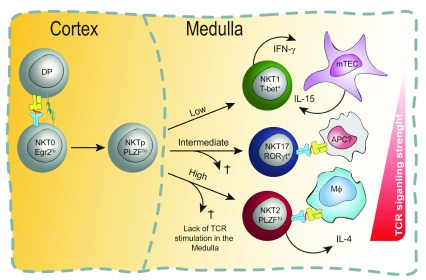Figure 3. Model of T-cell receptor (TCR) signaling in the medulla for invariant natural killer T (iNKT) subset activation and survival.
According to this non-mutually exclusive model, subset commitment decisions are made or reinforced (or both) in the thymic medulla. At the CCR7 + stage, developing natural killer cell progenitors (NKTp) may still be uncommitted to any particular subset (as shown). Alternatively, signaling at the double-positive (DP) stage may have altered their epigenomes such that they have a propensity to differentiate into one of the three major subsets (as depicted in Figure 2). Either way, following migration into the medulla, NKTp cells experience different strengths of TCR signaling—based on their TCR:CD1d/lipid binding avidity with distinct antigen-presenting cells (APCs) they stochastically encounter in the medulla—which governs their subset commitment or survival or both. Cells with the highest binding avidity survive as NKT2 cells, those with intermediate affinity survive as NKT17 cells, and only NKT1 cells survive without continued TCR stimulation. In the medulla, NKT2 cells require TCR–CD1d interaction with macrophages in order to produce interleukin-4 (IL-4) in the steady state, and NKT1 cells need IL-15 produced by medullary thymic epithelial cells (mTECs) for their proper differentiation and survival. It is unknown what cell types present lipids to NKT17 cells, although it is reported that they encounter intermediate TCR signaling in the steady state, which is crucial for their differentiation.

